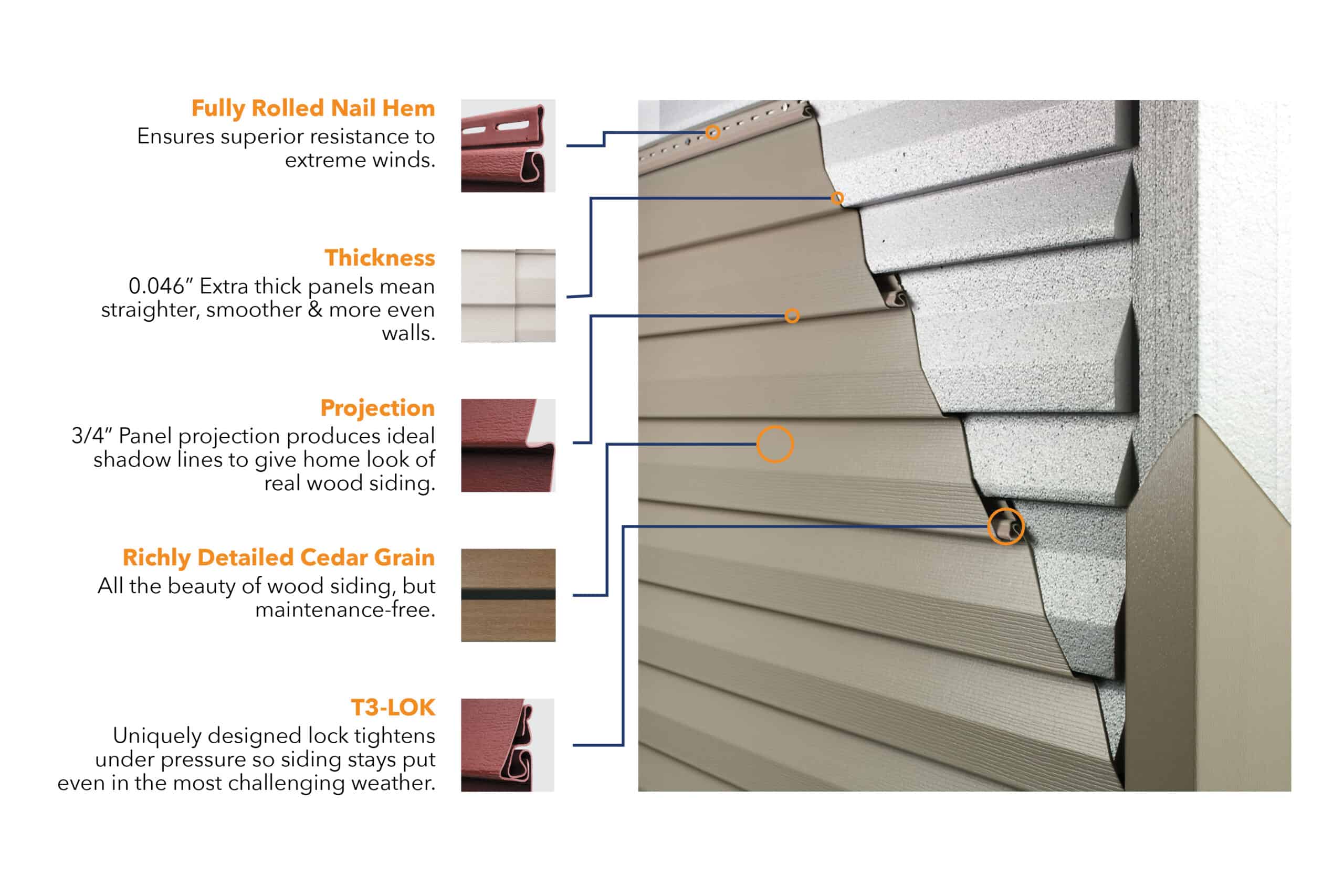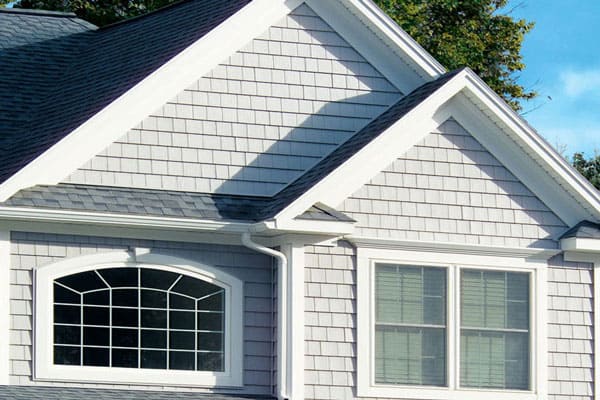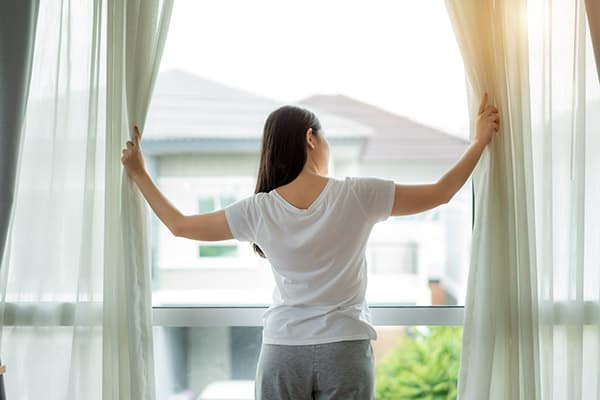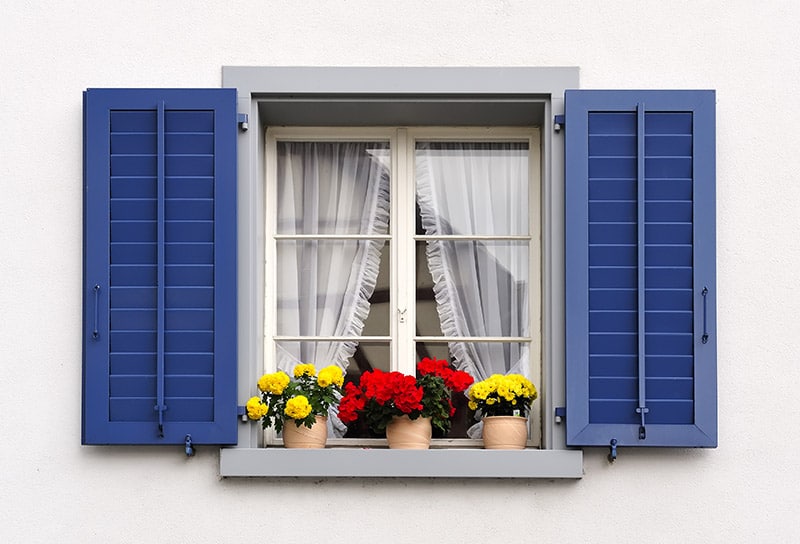Painting House vs. Replacement Siding: Pros and Cons Explained
Deciding between painting your house and opting for replacement siding is a significant home improvement decision that can impact both your home’s aesthetic appeal and its protective capabilities. This choice not only affects the immediate curb appeal through various siding colors and finishes but also influences longer-term factors like energy efficiency, siding lifespan, and overall home value. Understanding the pros and cons of painting vs. replacing siding, especially when considering options like vinyl siding or other siding types, is crucial for homeowners aiming to enhance their property’s appearance and functionality.

In this article, you’ll discover the advantages and disadvantages of painting old siding compared to complete siding replacement. We’ll delve into key considerations such as siding damage, the efficiency of siding insulation, and the relevance of a siding warranty. Whether it’s assessing the need for replacing siding due to extensive wear or contemplating the refresh that painting siding can offer, we aim to provide you with comprehensive insights. From evaluating your home’s specific needs to making an informed decision on painting vs. replacing siding, our goal is to guide you through understanding how each option aligns with your home improvement goals, ensuring you make the best choice for your unique situation.
Painting Old Siding: Pros and Cons
Affordability of Painting vs. Replacement
Painting old siding is often seen as a cost-effective alternative to replacement. The initial outlay for painting can be significantly lower, with estimates suggesting that painting old siding costs between $99 and $242 per 300 square feet. This is a stark contrast to the expenses involved in replacing siding, which not only includes the cost of new materials but also labor for installation. For homeowners concerned about immediate budget constraints, painting provides a noticeable improvement in appearance without the hefty upfront costs associated with new siding.
Color Customization and Aesthetic Control
One of the compelling advantages of painting your old siding is the level of customization it offers. Unlike siding replacement, where you might be limited to the colors available in a manufacturer’s inventory, painting allows for an extensive range of color choices. This flexibility enables you to select or even custom mix the exact hue that complements your home’s exterior. Painting your old siding can breathe new life into your home’s appearance, making it stand out in your neighborhood with a fresh, updated look.
Time Considerations
When it comes to time efficiency, painting old siding is considerably less time-consuming than replacing it. The process of painting can be completed relatively quickly, especially if you are experienced or if you hire professionals who are efficient with their tasks. Preparation for painting, such as washing and priming the siding, typically requires a few days, whereas replacing siding involves a more extended period due to the complexities of removal and installation.
Longevity and Durability of Paint Jobs
While painting old siding can revitalize its appearance, it’s important to consider the longevity of the paint job. Typically, the lifespan of exterior paint varies between 5 to 10 years, depending on factors like climate, the material of the siding, and the quality of the paint used. High-quality paints and proper application can extend the life of the paint job, but it will not be as durable as new siding materials that can offer longer lifespans with minimal maintenance.
Maintenance and Upkeep
Maintaining painted siding is crucial to prolong its appearance and durability. Regular cleaning to remove dirt, grime, and mildew is necessary to maintain the aesthetic appeal. Additionally, painted surfaces may require periodic touch-ups, especially in areas exposed to harsh weather conditions. Although painting is a less expensive option initially, it requires ongoing maintenance that can add up in terms of time and cost over the years.
In summary, while painting old siding offers immediate aesthetic improvements and cost savings, it is less durable and requires more maintenance compared to replacing siding. Each homeowner must weigh these factors based on their specific needs, budget, and long-term home improvement goals.
Siding Replacement: Pros and Cons
Increased Property Value and ROI
Replacing your home’s siding can significantly enhance its market value, making it a worthwhile investment. According to industry reports, homeowners can recoup up to 86% of the cost of fiber cement siding and 82% for vinyl siding at resale. This high return on investment makes siding replacement not only a cosmetic upgrade but also a financially smart decision.
Enhanced Curb Appeal and Aesthetics
New siding can transform the appearance of your home, boosting its curb appeal and making it more attractive to potential buyers. The variety of siding materials available, such as vinyl, fiber cement, and wood, allows for a range of aesthetic options that can complement any architectural style. Updated siding can eliminate signs of wear like fading, cracking, or warping, instantly rejuvenating your home’s exterior.
Energy Efficiency Improvements
One of the most compelling reasons to replace siding is the improvement in energy efficiency. Modern siding materials can include built-in insulation or be installed with additional insulative layers, reducing heat loss in winter and keeping your home cooler in summer. This can lead to lower utility bills and a more comfortable living environment. Moreover, energy-efficient siding can be a key selling point, appealing to environmentally conscious buyers.

Repairing Hidden Structural Damage
Old, damaged siding can often conceal underlying issues such as rot, mold, or insect infestation. Replacing your siding allows you to address these problems before they escalate, potentially saving you from more extensive and costly repairs in the future. A thorough inspection during siding replacement can reveal hidden damage, ensuring your home remains structurally sound and well-protected.
Color Limitations and Cost
While siding replacement offers many benefits, there are considerations to keep in mind. The cost can be a significant factor; new siding can range from $5,447 to $16,652 on average, depending on the material and scope of the project. Additionally, while there is a wide range of colors and styles available, some materials may have limitations in color choices, which could affect your ability to match existing aesthetics or achieve a specific look.
Evaluating Your Home’s Specific Needs
When it comes to deciding whether to paint or replace siding on your home, understanding your home’s specific needs is essential. This includes considering the historical significance of your home, assessing the current condition of your siding, and taking into account the climate and environmental factors of your area. Let’s delve into these critical considerations to help you make an informed decision.
Considerations for Historical Homes
If your home is of historical significance, it’s crucial to inspect the siding and note any non-original exterior wall coverings. Many historic houses have been covered with replacement siding or slipcovers that could be damaging to the original facade. However, some of these changes may have become historically significant themselves and should be preserved. Before starting any siding replacement, ensure you’re aware of local historical preservation guidelines, as cities and towns often have rules to protect historical properties and their architectural integrity.
Assessing the Condition of Existing Siding
- Look for Signs of Damage: Start by examining your home for any obvious damage such as peeling paint, wood splits, and wood rot. Pay particular attention to areas prone to water damage, such as window heads, sills, and the bottom few boards of the siding.
- Check for Moisture Intrusion: Moisture testing can reveal hidden issues like rot or mold behind the siding, which are not immediately visible. This step is crucial, especially if you’re considering painting over existing siding, as trapped moisture can lead to further damage.
- Evaluate Siding Material: Different materials respond differently to environmental conditions. For instance, stucco may not be suitable for areas with heavy snowfall due to its poor moisture resistance, whereas vinyl siding, especially high-quality or insulated types, can offer durability across a range of temperatures and conditions.
Climate and Environmental Factors
The climate in your area plays a significant role in determining the best siding material for your home. Consider the following factors:
- Temperature Fluctuations: Materials that can withstand temperature extremes without warping or cracking are essential in regions with significant temperature variations.
- Moisture and Humidity: In areas with high humidity or moisture levels, choosing a moisture-resistant siding material is critical to prevent rot, mold, and mildew.
- Wind and Storm Resistance: If you live in a region prone to severe storms or high winds, selecting siding material with high durability and impact resistance is necessary to protect your home.
- Environmental Considerations: For areas with specific environmental conditions, such as coastal regions or areas with frequent hail, choosing materials like fiber cement siding can provide better protection and durability.
By carefully evaluating your home’s specific needs, including the historical significance, the current condition of your siding, and the climate and environmental factors of your area, you can make a well-informed decision on whether painting or replacing your siding is the best option for your home.
Making the Decision: Paint or Replace?
Deciding whether to paint or replace your home’s siding is a significant decision that involves weighing various factors such as cost, maintenance, impact on home value, and environmental considerations. Here’s a comprehensive analysis to help you make an informed choice.
Cost-Benefit Analysis
When evaluating the cost versus value of painting versus replacing siding, it’s essential to consider both the immediate expenses and the long-term benefits. Painting your home’s interior, for example, is relatively affordable and can enhance your home’s appeal significantly. The return on investment can be substantial, with instances of property value increasing by nearly 10% to 15% after a professional paint job. On the other hand, projects like adding a deck or patio offer a positive ROI, improving your home’s resale value by over $7,000 on average. However, siding replacement, especially with materials like vinyl siding, can also significantly increase your home’s value, with potential recoupment of up to 86% of the cost at resale.
Future Maintenance and Care Requirements
Painting your siding can be a more cost-effective solution initially, but it’s crucial to consider the maintenance and care requirements. Painted siding requires regular upkeep, including cleaning and periodic touch-ups, especially in areas exposed to harsh weather. In contrast, new siding, particularly vinyl siding, offers strong aesthetics with less maintenance work. If you’re aiming for reduced long-term care, replacing your siding might be the more advantageous option.
Impact on Home Value
The impact on your home’s market value is a critical consideration. While painting can modernize a room and make your home more attractive to potential buyers, siding replacement can significantly improve your property’s overall value. New siding not only enhances curb appeal but also indicates a well-maintained property to potential buyers. For instance, replacing siding with modern materials can increase your home’s energy efficiency, resulting in potential cost savings on energy bills and a higher perceived value.
Environmental Considerations
The environmental impact of your choice is another important factor. When considering eco-friendly options, it’s vital to look at the sustainability of materials and their production, transportation, and disposal impacts. Wood siding, for example, is renewable and has a lower environmental impact during production compared to vinyl or aluminum. Fiber cement siding, made from natural resources, offers durability and can be recycled, minimizing its environmental footprint. Conversely, vinyl siding, while not biodegradable, is recyclable and can have a lower environmental impact than other materials.
In conclusion, your decision to paint or replace your siding should be based on a thorough analysis of these critical factors. Consider your budget, long-term maintenance requirements, the potential impact on your home’s value, and environmental considerations. By carefully evaluating these aspects, you can choose the option that best aligns with your home improvement goals and sustainability values.
Conclusion
Through this comprehensive exploration of whether to paint or replace siding, we’ve navigated the factors that influence this crucial home improvement decision, including cost considerations, maintenance needs, environmental impacts, and the potential to enhance your home’s value. In understanding the pros and cons of each option, homeowners are equipped with the knowledge to make a decision that not only suits their current budget but also aligns with their long-term objectives for home maintenance and value enhancement. It’s essential to balance these aspects carefully to select an option that optimizes both aesthetic appeal and functional performance over time.

As you ponder the optimal path for your home’s exterior, remember that making an informed decision is paramount. Whether aiming to boost curb appeal, improve energy efficiency, or enhance the durability of your home’s exterior, the right choice can significantly impact your home’s overall appeal and value. Should you lean towards replacing your siding and wish to explore this option further, do not hesitate to get a free quote today, ensuring you can move forward with confidence. By considering the detailed insights provided, you’re well-positioned to make a choice that not only meets your immediate needs but also secures your home’s future.





